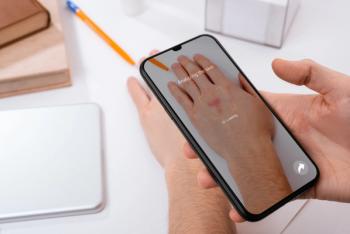
Off-label PDT protocols show promise in AK treatment
Modified PDT protocols prove promising for AK treatment, maintaining high clearance rates while reducing cost, one expert says.
Maria M. Tsoukas, M.D., Ph.D.Photodynamic therapy (PDT) with 20% aminolevulinic acid (ALA; Levulan Kerastick, DUSA) and blue light (BLU-U, DUSA) is a useful option for treating
READ:
Modified protocols are being looked at, however, and are showing promise for improving treatment convenience and reducing cost while maintaining or enhancing initial and longer-term outcomes, she told colleagues Saturday, March 5 at the 74th Annual Meeting of the American Academy of Dermatology.
The protocol for PDT that is approved in the United States is a five-step process that includes an ALA incubation period of 14 to 18 hours (although a shorter incubation time of two to three hours has showed similar efficacy), and it often requires one or two additional sessions performed at intervals of three to four weeks to optimize the outcome, Dr. Tsoukas says.
Protocol in point
At the University of Illinois at Chicago, Dr. Tsoukas and colleagues have implemented a protocol that seems to reduce the need for repeat sessions. It uses topical 5- fluorouracil (5-FU) as pretreatment, beginning seven to 10 days prior to standard PDT.
ALSO READ:
“Results from several studies indicate that using the FDA-approved protocol, two or three serial PDT sessions are needed to eradicate 70% to 95% of AKs, and these serial PDT sessions have also been shown to provide longer ‘lesion-free’ intervals than a single treatment,” she says.
“Analyses of outcomes using our approach using a short pre-treatment course of topical 5-FU indicate we are achieving an AK eradication rate of up to 95% and better control of AK recurrences with just a single PDT session.”
Side effects
Dr. Tsoukas adds that when the skin is treated first with 5-FU, patients may develop a brisker local response with greater discomfort likely during the light treatment and increased redness and peeling after.
RECOMMENDED:
“Discomfort during the light treatment is mostly dependent on the severity of actinic damage and becomes manageable through topical cooling with spray mist, handheld mini fans, or iced towels. Care is needed to avoid excessive cooling, however, because that may decrease PDT efficacy,” she says, adding that other protocols implement local anesthetics or nerve blocks.
Other strategies that have been reported for enhancing the benefit of PDT for treating AKs include:
- mild curettage of hyperkeratotic lesions prior to treatment;
- occlusion during ALA incubation;
- application of heating, particularly when treating AKs on the extremities;
- fractional laser resurfacing or microneedling prior to PDT;
- application of longer and/or multiple wavelengths during light exposure;
- fractionated PDT, and application of other topical agents prior to PDT or for a short course after, such as imiquimod, ingenol mebutate, diclofenac, or retinoids.
In addition, daylight PDT is being widely used in Europe and is beginning to be adopted in the United States.
“Substituting the conventional light irradiation with exposure to ambient visible light, may provide a safe, effective, well-tolerated and cost-effective method for medical and cosmetic dermatology PDT applications. By utilizing natural light, PDT may ultimately be used in reversing photoaging,” Dr. Tsoukas says.
Tips to minimize risk
“Of course to minimize risks, physicians must carefully choose candidates who are able to adhere exactly to protocols and educate each patient thoroughly.”
Discussing other medical applications, Dr. Tsoukas says that PDT has been applied extensively in Europe for the treatment of superficial basal cell carcinomas (BCCs) and nodular BCCs with good results.
READ:
“However, PDT is strictly contraindicated for micronodular invasive and morphea form BCCs as well as invasive squamous cell carcinomas (SCCs),” she adds.
“And hyperkeratotic and persistent lesions in patients at high risk for non-melanoma skin cancers must always be biopsied and examined histopathologically considering these individuals may rapidly develop poorly differentiated invasive SCCs.”
Potential in acne vulgaris tx
There is also good evidence showing that PDT is a useful modality for treating inflammatory acne vulgaris. Dr. Tsoukas says the protocol is similar in many ways to the one used for AK treatment, albeit use of a shorter incubation time and a longer light wavelength for the illumination seem to provide the best control of acne flares.
ALSO READ:
“PDT can be used in conjunction with long-term topical acne therapies, which should be temporarily stopped during PDT, and it may also be a suitable option for patients with inflammatory acne who cannot tolerate systemic therapies,” she says.
Newsletter
Like what you’re reading? Subscribe to Dermatology Times for weekly updates on therapies, innovations, and real-world practice tips.


















